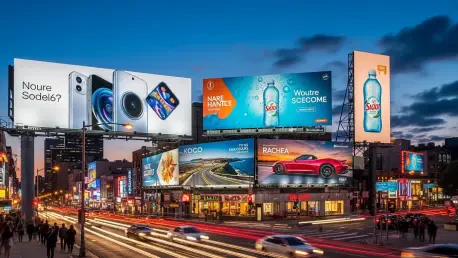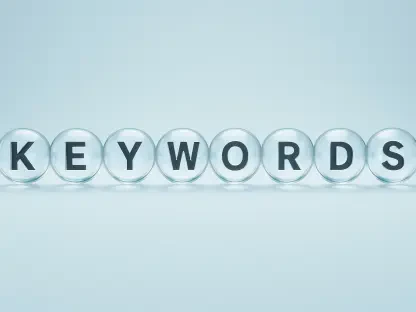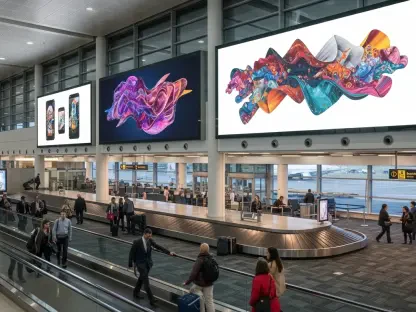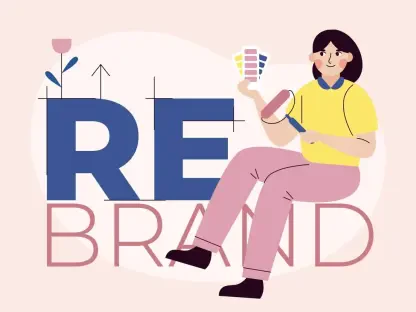Imagine a crisp September morning in Ireland, where the streets buzz with students heading to class, parents rushing to secure last-minute supplies, and professionals embracing a renewed focus on personal goals as they dive into this annual reset. This deeply embedded moment in the national psyche marks a powerful transition that brands can harness to make a lasting impact. The back-to-school season represents not just a return to routine but a unique opportunity to connect with diverse audiences at a time of heightened intent. This guide aims to help brands and marketers maximize their reach and relevance during this pivotal period by leveraging Out of Home (OOH) advertising. By exploring actionable strategies, emotional storytelling, trust-building techniques, and sustainable practices, the following sections provide a comprehensive roadmap to achieving measurable success in Ireland’s dynamic advertising landscape.
The purpose of this guide is to equip marketers with the tools and insights needed to navigate the back-to-school season effectively. September in Ireland is more than a calendar shift; it is a cultural phenomenon that influences consumer behavior across generations, from Gen Z to busy parents. Out-of-home (OOH) advertising stands out as a medium that can capture attention in public spaces, seamlessly integrating into daily life while delivering powerful messages. Understanding how to utilize this platform during such a critical time can elevate brand visibility and foster long-term loyalty among varied demographics.
This guide also underscores the importance of aligning advertising efforts with current consumer values, such as authenticity and sustainability. With a focus on practical steps and data-driven insights, it offers a clear path to crafting campaigns that resonate emotionally and build trust. Marketers will learn how to tap into the unique mindset of each audience segment and position their brand as a relevant solution during this season of change.
Capturing the September Reset: A Prime Opportunity for Brands
The back-to-school season in Ireland, particularly in September, signifies a profound cultural and behavioral shift that ripples across society. As summer fades, students prepare for new academic challenges, parents reorganize household routines, and professionals refocus on self-improvement goals. This collective realignment creates a rare window for brands to engage with audiences who are actively seeking products and services to support their transitions. Out-of-home (OOH) advertising, with its prominent presence in public spaces, offers an ideal platform to capture attention during this time of heightened motivation.
Beyond mere visibility, out-of-home (OOH) advertising excels in fostering emotional engagement, a critical factor in influencing consumer decisions during this period. The medium’s ability to integrate into everyday environments allows brands to connect with people non-intrusively, whether they are commuting, shopping, or dropping off children at school. This seamless interaction can evoke nostalgia or anticipation, emotions that are particularly potent as families and individuals reset their priorities for the year ahead.
Moreover, this season presents an opportunity to build trust and demonstrate sustainability, aligning with consumer expectations in today’s market. By employing frameworks such as Talon’s ACES (Audience, Creative, Effective, Sustainable), brands can structure campaigns that address diverse needs while maximizing impact. The following sections delve into specific strategies to leverage this prime opportunity, ensuring that advertising efforts resonate deeply and deliver lasting results.
The Cultural Significance of Back-to-School in Ireland
In Ireland, the back-to-school season is more than a logistical event; it is a national touchstone that signals the end of summer leisure and the beginning of structured routines. September transforms the rhythm of daily life, affecting not just students but entire communities as families recalibrate schedules and set new goals. This widespread transition fosters a collective mindset of renewal and intent, making it a critical juncture for advertisers to step in with relevant messaging.
This period stands out due to its universal impact across demographics, from young children starting school to adults embracing fresh starts in their careers or personal lives. The societal shift creates a surge in consumer activity, with heightened demand for school supplies, clothing, technology, and self-improvement resources. Brands that position themselves as allies during this busy time can forge strong connections by addressing immediate needs and aspirations.
The cultural weight of this season amplifies the potential for advertising to leave a lasting impression. As people navigate the challenges and excitement of new beginnings, they are more receptive to solutions that ease their transitions. Out-of-home (OOH) advertising, with its ability to reach audiences in high-traffic areas, can effectively tap into this receptive state, offering timely and relatable content that aligns with the national mood of preparation and progress.
Leveraging OOH Advertising: Key Strategies for Success
Step 1: Understanding Diverse Audience Mindsets
The back-to-school season in Ireland brings together a variety of demographics, each with distinct priorities and needs. Gen Z, parents, and young professionals represent key segments whose mindsets shape their purchasing decisions during this time. Data highlights that Gen Z values authenticity, with a significant percentage prioritizing genuine brand interactions, while parents focus on cost-effective solutions, often seeking deals in the weeks leading up to September. Young professionals, meanwhile, view this period as a chance for self-improvement, focusing on health and productivity.
Tailoring out-of-home (OOH) campaigns to these diverse groups requires a deep understanding of their unique motivations. Messaging must be customized to address specific pain points and desires, ensuring relevance in a crowded market. By segmenting audiences and crafting targeted content, brands can cut through the noise and establish meaningful connections during this high-stakes season.
Targeting Gen Z with Authenticity
Gen Z, as a digitally savvy and socially conscious demographic, demands transparency and authenticity from brands. Out-of-home (OOH) campaigns that resonate with this group often feature relatable visuals and messaging that reflect their values of individuality and social impact. Incorporating elements of self-expression, such as bold designs or user-generated content themes, can make advertisements feel personal and engaging in public spaces.
To further connect with Gen Z, brands should consider placements in areas frequented by this age group, such as near universities or urban hangouts. Highlighting a commitment to causes they care about, like mental health or environmental responsibility, can also strengthen appeal. The key lies in avoiding over-polished or inauthentic content, instead opting for raw, honest narratives that mirror their lived experiences.
Engaging Parents with Value-Driven Messaging
Parents, often under pressure to prepare for the school year, prioritize practicality and affordability in their purchasing decisions, and OOH advertising can effectively reach this group by showcasing deals and time-sensitive offers on billboards near shopping centers or residential areas. Clear, concise messages about discounts or essential products can capture attention during their busy routines.
Beyond just price points, campaigns should emphasize reliability and convenience, addressing the logistical challenges parents face when managing their busy schedules. Visuals depicting family scenarios or problem-solving products can create an immediate emotional connection. Placing advertisements in locations tied to daily errands, such as near supermarkets, ensures that the message reaches them at moments of decision-making.
Inspiring Young Professionals with Self-Improvement Themes
Young professionals often see September as a fresh start, akin to a personal new year, where they set goals for health, career, or skill development. OOH campaigns targeting this demographic should focus on themes of growth and motivation, using imagery and slogans that inspire action. Advertisements near gyms, coworking spaces, or public transport hubs can effectively reach this audience during their daily commutes.
Content that promotes productivity tools, wellness services, or educational opportunities tends to resonate strongly with this group. Highlighting success stories or aspirational lifestyles through impactful visuals can further drive engagement. The goal is to position the brand as a partner in their journey toward self-betterment, offering solutions that align with their ambitions.
Step 2: Creating Emotional Connections through Storytelling
Emotional storytelling serves as a cornerstone of effective out-of-home (OOH) advertising, particularly during the back-to-school season when feelings of nostalgia and anticipation run high. Studies indicate that a majority of Irish consumers form emotional bonds with brands, often basing purchasing decisions on feelings rather than logic. OOH’s ability to deliver striking, memorable visuals in public spaces makes it an ideal medium for crafting narratives that touch hearts.
To maximize impact, campaigns should weave stories that reflect the shared experiences of returning to school or starting anew. These narratives can evoke memories of first days, parental pride, or personal reinvention, creating a sense of connection without overt selling. When done right, such storytelling transforms advertisements into relatable moments that linger in the minds of passersby.
Crafting Compelling Visual Narratives
Designing OOH campaigns with strong visual narratives requires a focus on imagery that instantly communicates emotion. Pictures of children laughing with backpacks, parents organizing supplies, or individuals achieving goals can strike a chord with diverse audiences. Pairing these visuals with minimal, poignant text ensures the message is clear even at a glance, a necessity in fast-paced public environments.
Color schemes and typography also play a vital role in setting the tone of the story. Warm, inviting hues can evoke comfort, while bold fonts can convey energy and excitement. Testing different creative elements in smaller markets before a full rollout can help refine the approach, ensuring the campaign resonates across varied locations in Ireland.
Maximizing Non-Intrusive Impact in Public Spaces
One of the strengths of out-of-home (OOH) advertising lies in its non-intrusive nature, blending into everyday settings without disrupting personal space. Unlike digital ads that may feel invasive, OOH messages on bus shelters, billboards, or transit stations become part of the urban landscape, offering subtle yet powerful exposure. This passive interaction allows consumers to engage with the brand on their own terms, fostering positive associations.
Strategic placement in high-traffic areas ensures maximum visibility without overwhelming the audience. Timing also matters—launching campaigns in late August or early September aligns with the peak of back-to-school planning. By integrating seamlessly into daily life, out-of-home (OOH) advertising can amplify emotional resonance while maintaining a respectful distance.
Step 3: Building Trust with Consistent Public Visibility
Trust remains a critical factor in consumer decision-making, especially in an era of skepticism toward brand claims. Out-of-home (OOH) advertising, by its very public nature, fosters accountability as messages are exposed to widespread scrutiny in communal spaces. Benchmarks show notable increases in purchase consideration and brand credibility when campaigns are visible in such transparent environments, reinforcing reliability.
Consistency across locations further solidifies this trust, ensuring that consumers encounter the same core message regardless of where they are. This uniformity helps build a coherent brand identity, which is crucial during a season when attention spans are stretched thin. Public visibility thus becomes a tool for establishing authenticity and dependability in the eyes of the audience.
Ensuring Accountability in Public Platforms
The public setting of out-of-home (OOH) advertising inherently demands accountability, as brands cannot hide behind anonymity. When a message appears on a prominent billboard or transit ad, it signals confidence in the claim being made, which consumers often interpret as a mark of trustworthiness. This transparency can be particularly effective during the back-to-school rush, when reliability is a top concern for shoppers.
To capitalize on this, brands should ensure that promises made in advertisements—whether about quality, price, or impact—are verifiable and deliverable. Highlighting real customer testimonials or certifications in the design can further bolster credibility. Such openness in shared spaces reassures consumers, encouraging them to engage with the brand without hesitation.
Maintaining Message Consistency Across Locations
Uniformity in messaging across different out-of-home (OOH) placements strengthens brand recognition and trust. Whether a consumer sees an ad in Dublin or Galway, the core theme, visuals, and tone should remain consistent, creating a seamless experience. This approach prevents confusion and reinforces the brand’s commitment to clarity and dependability during a busy season.
Using centralized creative guidelines ensures that regional variations do not dilute the campaign’s impact, while regular audits of ad placements can help identify discrepancies early, allowing for quick adjustments. A unified presence across Ireland’s diverse landscapes signals to consumers that the brand is steadfast, a quality that resonates deeply during times of transition.
Step 4: Prioritizing Sustainability in Campaign Design
Sustainability has emerged as a significant concern for Irish consumers, with many expressing a willingness to support eco-friendly brands despite skepticism about environmental claims. Out-of-home (OOH) advertising offers a lower carbon footprint per impression compared to other media, making it a responsible choice for environmentally conscious campaigns. Utilizing recycled materials and energy-efficient technologies further enhances its appeal as a green option.
Brands that prioritize sustainability in their out-of-home (OOH) efforts can differentiate themselves in a competitive market, especially during the back-to-school season when values-driven purchasing peaks. Demonstrating a commitment to the planet through advertising choices can build goodwill and loyalty among audiences who prioritize ethical practices. This alignment with consumer expectations is not just a trend but a strategic imperative.
Aligning with Consumer Eco-Conscious Values
To connect with eco-conscious consumers, OOH campaigns should visibly showcase sustainable practices, such as using biodegradable materials for posters or highlighting a brand’s environmental initiatives. Messaging that ties back-to-school themes to broader societal good, like supporting local communities or reducing waste, can strike a chord with value-driven individuals. Such efforts signal that the brand shares their commitment to a better future.
Transparency about sustainability efforts is crucial, as skepticism toward green claims remains high. Providing clear, factual information about the campaign’s environmental impact—perhaps through a small footnote on the ad—can address doubts. This honesty fosters a deeper connection with audiences who seek brands that walk the talk during their seasonal shopping.
Utilizing Green Technologies in OOH Formats
Innovations in out-of-home (OOH) advertising, such as solar-powered digital screens and LED displays, offer practical ways to reduce energy consumption while maintaining high visibility. These technologies not only lower the environmental impact but also serve as a selling point in campaigns, showcasing a brand’s forward-thinking approach. Implementing such solutions in high-traffic areas can amplify their visibility and impact.
Partnering with out-of-home (OOH) providers who prioritize green practices ensures that the entire campaign aligns with sustainability goals. Highlighting these technological advancements in the ad copy or design can educate consumers about the brand’s efforts, enhancing perception. As environmental awareness grows, adopting these formats positions brands as leaders in responsible advertising.
Summarizing the Power of OOH During Back-to-School
The back-to-school season in Ireland stands as a pivotal moment for brands to engage with motivated audiences, and out-of-home (OOH) advertising offers unparalleled advantages in this context. By strategically targeting diverse demographics, crafting emotionally resonant stories, ensuring consistent visibility, and embracing sustainable practices, marketers can achieve significant impact. The medium’s ability to blend into public spaces while delivering powerful messages makes it a standout choice for this critical time.
Key benefits of OOH during this period include:
- Targeting diverse audience mindsets with tailored messaging.
- Driving emotional connections through creative storytelling.
- Building trust with consistent, public visibility.
- Aligning with sustainability trends for responsible branding.
These elements collectively create a robust framework for success, ensuring that campaigns not only capture attention but also foster long-term consumer relationships. Brands that harness these strategies can position themselves as indispensable partners in the annual reset that September brings to Ireland.
Broader Implications and Future Trends in OOH Advertising
The strategies outlined for back-to-school out-of-home (OOH) advertising in Ireland reflect broader marketing trends that extend beyond seasonal campaigns. Intent-based marketing, which focuses on aligning with consumer mindsets at specific moments, continues to gain traction as a method to drive relevance and engagement. This approach, rooted in understanding audience needs, can be applied to other cultural or seasonal touchpoints, amplifying its utility across the advertising calendar.
Emotional resonance and trust remain central to consumer decisions, with public platforms like out-of-home (OOH) advertising playing a vital role in reinforcing credibility. As skepticism toward brand claims persists, the push for transparency and consistency will likely intensify, prompting advertisers to refine their messaging further. Additionally, sustainability in advertising is no longer optional but a fundamental expectation, with eco-friendly innovations in OOH expected to expand in the coming years, from 2025 onward, shaping how campaigns are designed and perceived.
Challenges such as consumer doubt over environmental claims will need to be addressed through verifiable actions and clear communication to build trust and credibility. Future developments in out-of-home (OOH) technology, including advanced data analytics for audience targeting and interactive digital formats, promise to enhance engagement tactics. These evolving trends suggest that the principles guiding back-to-school campaigns can inform broader strategies, ensuring adaptability in an ever-changing market landscape.
Final Thoughts: Activating Back-to-School Success with OOH
Reflecting on the strategies employed during the back-to-school season in Ireland, it became evident that September had offered a unique window for brands to forge meaningful connections through out-of-home (OOH) advertising. The focus on understanding diverse audience mindsets, from Gen Z to young professionals, had laid a strong foundation for tailored campaigns that resonated deeply. Emotional storytelling in public spaces had proven effective in capturing hearts, while consistent visibility had built trust among skeptical consumers.
Sustainability efforts have also played a crucial role, aligning campaigns with the growing demand for responsible practices and enhancing brand perception. Looking ahead, brands can build on this momentum by exploring innovative out-of-home (OOH) technologies, such as interactive displays, to further engage audiences in future seasons. Investing in frameworks like Talon’s ACES can provide ongoing structure, ensuring that each campaign remains audience-centric, creative, impactful, and eco-conscious, paving the way for sustained success in Ireland’s vibrant advertising scene.









